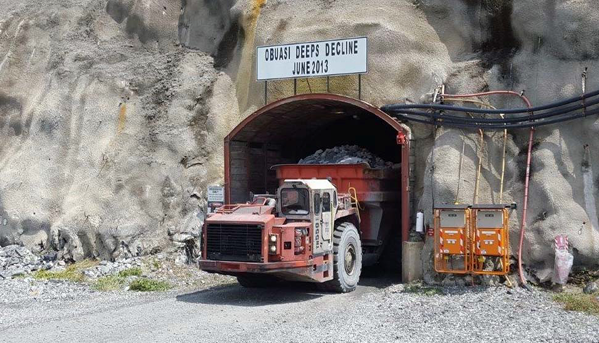
This Republic anniversary, the virtual surrender of our sovereignty to Galamsey warlords should sadden our founding fathers and humble our pride as the Black Star of Africa.
But this also compels me to narrate my horrific ordeal decades ago, and experience Jonah in the belly of the whale.
I hereby challenge Galamsey warlords ensconced in air-conditioned offices to remove their suits and be challenged to a battle of endurance. This is my story told by my write hand long ago.
I was a young lecturer below 40, enjoying the comforts of academia but dreading the horrors of military rule. As a past me, we formed the Legon Don’s Soccer Club, made up of academics with an interest in soccer. With the blessing of our Vice Chancellor, Akilagkpa Sawyer (Aki ooo Aki), we were unofficially part of Legon Outreach’s team.
The links between academics and soldiers, made sour by a controversial public lecture by Adu Boahen, needed repair, and sports were the instrument. The business community was also our target, and a trip to Obuasi Gold Mines was a dream to improve Legon’s interface with the corporate world.
The practice of ‘Galamsey’ at the time was a low-key practice, and we used the term largely as a metaphor for any part-time work on the blind side of authorities. The real test of juvenile bravado lay in mining, not as a vicarious experience, but with head and shoulders.
Accomplices in the venture included Vladimir Antwi Danso (Modern Languages, now with the Armed Forces Staff and Command College), Kwaku Adu (History), Aloysius Denkabe, Larbi Korang, alias ‘Cooler’ (English), Awotwe (Agric), Rojo Mettle Nunoo, etc. Added for good measure were ‘mercenary’ graduate students courted to beef up the soccer team: C Bota, Albert, etc.
Each Club member (it is to be noted and hushed) came along with a guest, whose name will be omitted here for security reasons. Above all was Yours Truly, the self-appointed spokesman and captain of the Dons Club. I was captain from the touchline.
July 1988, during the Rawlings revolution. We beat our chests, ‘here we come, Ashanti Goldfields.’ Obuasi sat uneasily in a valley, completely hemmed in by mountains, such that you began to wonder if the town ever breathed. Ten or so kilometres towards the township, the stranger was overwhelmed by a never-ending ‘forest’ of junior and adult palm trees – most of them self-germinating, and enmeshed within an expansive plantation of teak trees.
The looks of Obuasi made no news if you had travelled to other parts of Ghana, except that Obuasi was a case of rags on riches: one of the richest gold mines in the world. The new Managing Director, Sam Jonah, born and bred in Obuasi himself, had facilitated our visit.
Walking through the major road and suburbs, Tutuka, Kwabrafuso, Boete, etc., you began to wonder if the early settlers knew what building spacing was all about. The congested houses were mostly relics of time-worn shelters awaiting ancestral redemption. Roads, environmental hygiene, and drainage were in tatters.
But there could be a reason behind Obuasi’s inelegant looks. One of the mine workers explained to me, “Most of the people that first settled here worked at the mine and enriched themselves through various means. To build a good house at the time would normally arouse suspicion about your sources of income. So you put up any structure so long as it had a roof. Most of the workers rather prefer putting up better houses in their hometown. It is not safe to be seen to be rich at a gold mine. You may be dismissed,” I was told.
As I scanned the Obuasi township, walking on gold-laden rocks, rubbing shoulders with mine workers, visiting their canteens, I prayed that any plea we made to be taken underground, commonly called daade, would be turned down.
Much to our disappointment, our half-hearted request was approved. Then came the message that half of the group would be taken 1,600 to 1,800 feet underground on the Cappendell Shaft, and the other group 4,400 feet on the Adansi Shaft.
Hearing this, hearts thumped around me, particularly from Antwi Danso and Kwaku Adu, two great pals. It was tempting then to say a last prayer or look for the nearest scrap paper to draft a will. During a briefing session before the ordeal, questions that came up included: ‘Are we going to breathe underground? What is the fatality rate, accident rate?’ etc.
The answers were good and bad. We were going to breathe okay: ‘There is one central ventilation shaft that absorbs one million cubic feet of air per minute; as it sucks air from the mine, fresh air rushes in to replace it’, so that people inside the earth’s belly can also breathe.
Hearing this, I heaved a sigh of relief, except for the lingering fear that the ground could cave in anytime, whether or not you are breathing. As I put on my oversized mining suit, heavy crash helmet with lamp fittings, and heavy oversized boots, I kept wondering which other Ghanaians had survived the ordeal.
Imagine how relieved I felt when I was told that Nana Konadu Agyemang Rawlings, Ghana’s First Lady, had survived it.
I told myself, if a 31st December woman had done it, how about a man born on 30th October?
DISCLAIMER: The Views, Comments, Opinions, Contributions and Statements made by Readers and Contributors on this platform do not necessarily represent the views or policy of Multimedia Group Limited.
DISCLAIMER: The Views, Comments, Opinions, Contributions and Statements made by Readers and Contributors on this platform do not necessarily represent the views or policy of Multimedia Group Limited.



